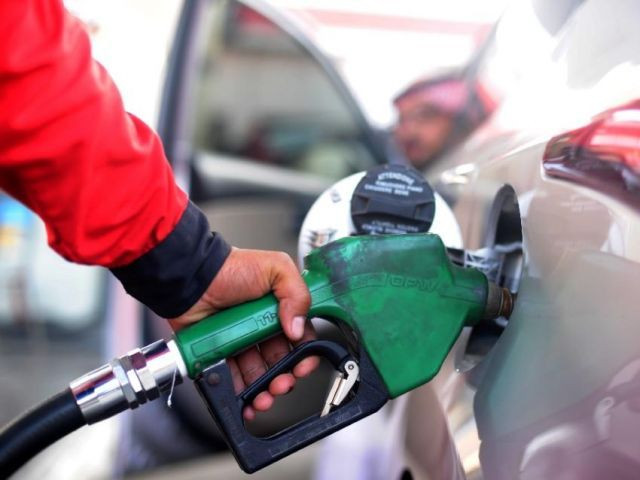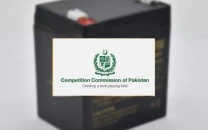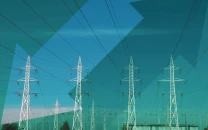Impact of taxes on fuel prices
Petrol prices in Pakistan have been lowest in region, while diesel prices have varied

Petrol and diesel prices have been reduced for the current fortnight from April 1-15. New petrol price is Rs110.35 per litre, down from Rs111.90 and new diesel price is Rs113.08 per litre, down from Rs116.08. Landed cost or ex-refinery cost of petrol is Rs72.28 per litre.
A maximum of Rs30 per litre can be charged as petroleum development levy (PDL) under the rules but it has been kept at a low level of Rs11.23.
Similar is the price structure of diesel. Light diesel oil (LDO) and kerosene prices have been slashed by Rs1.56 and Rs1.55 per litre respectively. On LDO and kerosene, taxes are not usually charged to keep prices low.
In the prevailing circumstances, petroleum prices could not have been possibly lower than what have been announced.
The Brent crude price dived to one of the lowest levels in recent history to $18.38 per barrel in April 2020.
Thereafter, in the Jun-Nov period, it remained stable in the range of $40-42 and after November, there has been a fast increase at a rate of $7 per month. Current Brent price is around $64 per barrel.
Correspondingly, petrol and diesel prices increased from Rs80-82 per litre in May 2020 to the current price level above Rs110 per litre.
In Pakistan, petrol prices have traditionally been the lowest in the region, while in the case of diesel prices have been varying. Latest international data, as on March 29, 2021, puts Pakistan in the lowest oil price category except for Sri Lanka. In Sri Lanka, diesel price is at $0.523 per litre against Pakistan’s $0.755. Pakistan’s petrol price is, however, the lowest at $0.728 per litre against India’s $1.274, Bangladesh’s $1.05 and even Sri Lanka’s $0.809.
Traditionally, petrol prices have been higher in India compared to Pakistan and diesel prices used to be lower. Indian oil pricing policy has changed towards higher taxation and prices.
Internationally, oil pricing policies can be classified into four categories: Lowest prices in oil exporting countries of the Middle East, countries with low oil prices between the lowest and US benchmark prices, countries with more than US benchmark and below highest prices in Europe, and countries with highest prices like Norway, Sweden, etc.
For example, the current gasoline prices are $2 per litre and diesel is sold at $1.742 per litre.
American oil prices are taken as a benchmark as these are stable and least taxed among developed countries and market economies.
Current diesel price in the US is $0.818 and petrol price is $0.843. Pakistan’s prices used to be in category-III but now they are under category-II of low prices.
Welfare implications
Another general trend in pricing policies has been that diesel is almost universally taxed lesser than petrol.
The argument has been that diesel is used in public and goods transport and has welfare and competitiveness implications. In Pakistan also, this used to be the case.
For some years, under the influence of a US-based IFI consultant, the policy has been changed in line with the US with no differential treatment. There is a need to reconsider this policy in Pakistan.
Admittedly, the political impact of increase in petrol prices is direct and immediate but within no time the impact of diesel prices results in consumer prices of commodities, causing inflation.
The combined consumption of petrol and diesel in Pakistan is around 16 million tons or 200 billion litres.
A tax of Re1 per litre earns the government Rs200 billion. It is the easiest way to collect taxes as opposed to others. In the case of electricity, a tariff increase of Re1 per kilowatt-hour has an impact of Rs100 billion or slightly higher.
An increase of Re1 per litre in oil prices has, at current prices and even generally, an impact of 1% on prices.
However, a Re1 increase in electricity tariff has an impact of 20% on poor, 10% on middle class and 5% on the higher economic class. It may be useful for the policymakers to consider energy prices as a whole to estimate government income vs welfare impact on people.
Electricity prices in Pakistan are the highest in the region, but oil prices are almost the lowest in US dollar terms, although due to heavy currency depreciation, the rupee price impact has been high.
Comparatively, the pain on public (also the industrial and export sectors) and the consequent political and economic impact of the increase in oil prices may be lesser within a certain price range.
The drive to reduce or eliminate circular debt may be moderated by the aforementioned considerations. One of the main causes of rising electricity cost and circular debt is the unutilised capacity and the rising capacity charges.
It would be unfair and impractical to try to pass on all of this to the consumer. It would be fair to levy a capacity charge of up to 60%.
Any capacity charge due to lower than 60% capacity utilisation has to be postponed until the capacity utilisation increases to an adequate level and the capacity charge comes down.
Some part of the circular debt may have to be absorbed in the general debt as proposed by an IPP report.
Concluding, a review may be conducted of diesel vs petrol pricing, cross electricity-oil price linkage and welfare differentiation and consideration of energy pricing in its totality.
The policy of charging lower tax (PDL) on higher international prices and higher tax on lower international prices, as is the case currently, is welcome and should continue with adjustment in diesel vs petrol prices.
THE WRITER IS FORMER MEMBER ENERGY OF THE PLANNING COMMISSION AND AUTHOR OF A NUMBER OF BOOKS ON THE ENERGY SECTOR



















COMMENTS
Comments are moderated and generally will be posted if they are on-topic and not abusive.
For more information, please see our Comments FAQ